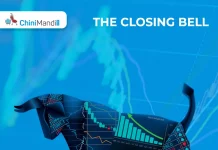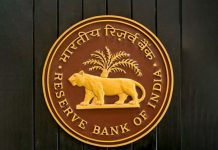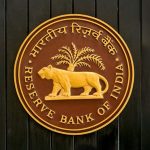July 4 to July 9, 2021
THE LYING TRADER
The sugar futures market in NY closed out the week at a 91-point steep fall, a little over 20 dollars per ton. October closed out the trading floor at 17.24 cents per pound. The months with a shorter maturity fell more than the months with longer maturities. And the values in real per ton continue falling on the short term while the prices for the future curves keep appreciating. The funds continue heavily long, now with 223,000 contracts according to the CFTC
An economist friend usually says that to make predictions for the trajectory of the dollar can greatly destroy the reputation of any analyst and economist, especially in Brazil, a country used to bumps perpetrated by endless crises that take turn, be them political, fiscal, financial, sanitary or any other. These imponderables many times turn the economist into a mere astrologer in a suit and tie.
However, there is an aspect about the currency exchange that is indisputable: the greater the distrust of the market in relation to the politics of the current government, the more unstable it will be. For instance, based on the fifth semester of Bolsonaro’s term and the same period of Lula’s and Dilma’s, the volatility of this government is 80% greater than that of the same period in Dilma’s government and 50% greater than that in Lula’s government, both in the first year of the term. That is, the exchange risk perception today is much higher than it was in previous governments making the hedge operations obviously more costly for the companies. And it tends to get worse given the upcoming troubled scenario due to the presidential elections next year.
Up until last month, the correlation of the exchange (R$/US$) with the sugar quotation in NY came to 0.9211 showing huge adherence between the two assets. If the real appreciated against the American currency, the sugar futures contract went up in the magnitude of the adherence. At the start of the pandemic, with the Brazilian currency melting against the dollar, sugar also headed toward the same direction ending up trading at 10.44 cents per pound. Since June, this correlation has evaporated.
We get it that the increase in sugar price in the NY contract the week before last and the fall that occurred over the week that closed out this Friday have nothing to do with the fluctuations of the real. On a booming market, a combination of macro factors and a good dose of the heavy hand of the funds that defended a long position on a market whose first spread showed a carry of 5% per year. Put yourself in the shoes of the fund manager and analyze what you would do: a) roll over the long position in October to March/2022 paying an (expensive) carry equivalent to 5.4% per year; sell October making an amazing profit and, at the same time, position yourself on March’s purchase when its quotation came close to October’s price realization?
Of course there are ways through options to roll over the long position from October to March at zero cost, but they imply risks that would need to be taken in order to carry out this operation, and the funds not always look at this kind of opportunity given the small percentage of sugar in the portfolio of a hedge fund.
Following up on the frost issue discussed here last week, it’s worth pointing out that, unlike what we said, though initially we could imagine that the damage had been close to zero, some agronomists disagreed – and rightly so – with what we said explaining that we should wait seven to ten days in order to be able to give an educated guess about the possible damage suffered by the mill. Therefore, let’s wait and see.
Regardless of the verdict, I was surprised at the data published by the CTC, the renowned Sugarcane Technology Center, which shows a 2.4% downturn in the sugarcane crop area. This is only another point which – I believe – can disproportionately increase sugar price from 2022/2023 on. And we must keep an eye out for all these important details.
It’s really hard to build, with the elements we have today, a negative scenario for the sector for the next years. I don’t mean to be extremely optimistic so as not to create false illusions in our readers’ head, but the elements are here to be tested and validated.
In the best case scenario, the 2022/2023 crop will be the same as the current crop being harvested now. Even if there is some improvement in terms of volume, nobody hopes for anything substantial. So, chances lie in the same ATR production.
Over the last twelve months Brazil has exported more than 32.5 million tons of sugar, adding in twelve months almost 13 million tons against the previous period, getting back its leadership on the foreign market. It has satisfactorily replaced those countries whose production dropped and opened up room for the Brazilian sugar. That’s wonderful!
However, in the years ahead, it’s highly likely that India will allocate more and more sugarcane into ethanol production to be mixed in gas, reducing the cost that country has with oil import. That way, our Indian friends strengthen their domestic market through a smaller availability of sugar and over a 4-5 year period walk toward consuming all the sugar/ethanol they produce. Our estimate is that India will go from the current 28.5 million tons consumed in one year to 31 million tons in 2026. Both domestic consumption spike and directing more sugarcane to ethanol production will depend on the recovery of the post-pandemic economy and the international oil price.
If the world has to go from a yearly consumption of 173 million tons of sugar to 184 million tons in five years, what country will be able to help meet this additional demand which is based mainly on the per capita income increase x population growth of the main Asian economies other than China and India binomial? Everybody will shout together, “Brazil”; that’s not the case, though.
It’s true we have a repressed fuel demand in Brazil. The pandemic has dried up, based on our numbers, an additional demand of seven billion liters that was being built by the predicted recovery in February/2020, so before the virus outbreak. The recovery of the economic activity will cause a substantial improvement on the demand for fuel and will make the sugar/ethanol supply equation even more complex and tighter.
With a smaller production for 2022/2023 and a huge potential for increasing the domestic and foreign consumption, Brazil doesn’t have enough sugarcane to meet this demand. Investments, expansions, brownfield and greenfield investments will have to be on the agenda. Brazil, based on a preliminary calculation, would need to produce at least another 125 million tons of sugarcane in 5 years. What if it doesn’t?
Any introductory course on economy will say that when the supply is smaller than the demand, prices go up. Yes, but in Brazil the government can reduce the ethanol mix in gas from the current 27% up to 18%. Also, there is no guarantee that this will solve the problem if the oil price combined with a weaker real ends up wiping out the economic advantage that the reduction in the mix would cause.
Ah, but Brazil produces corn ethanol. That’s true, but the drought that hit the sugarcane field also hit the corn. And the southern states, major pork and poultry producers in the country, will have to bring corn from other states and we don’t know yet what the effect of this coverage will have on the economic feasibility in the production of corn ethanol.
“If I’d known that, I wouldn’t have fixed my sugar”, an executive told me. This is the big and indecipherable dilemma in every decision making. The academic books highlight this point: when you make hedge, you give up on the possible continuity of price trend. We have always warned that pricing was/is extremely profitable. Our recommendation has been that you look at pricing as the EBITDA’S goal followed by the company, fix prices in real per ton and buy calls at 200 points above the fixed value as a hedge. It has worked for those who follow the rules to the letter. Only the lying trader buys low and sells high.
Click here to read Episode 1
Click here to read Episode 2
Click here to read Episode 3
Click here to read Episode 4
Click here to read Episode 5
Click here to read Episode 6
Mr. Arnaldo Luiz Correa is the Director at Archer Consulting. He is a Risk Manager with an experience of almost 30 years in the agriculture commodities market.
To get in touch with Mr. Arnaldo, write on arnaldo@archerconsulting.com.br












